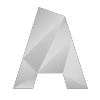
An awesome open-source Camera rig
I set out to create a platform and make sure you could 3D Print your DSLR shoulder rig.
I’ve always loved filming and cameras. I also love 3D and 3D Printing.
When combining this with my passion for gadgets i suddenly realize I can cut corners to expensive gear by making it myself.
When moving from visual 3D-VFX into more industrial 3D-modelling I picked up on the fact that I have all these 3D-printers available at the Creative Tools office. Why not 3D Print the rig?
The Goal
For anyone that’s new to camera rigs i’ll give you a short introduction here. The most common systems use 15mm Diameter rods (aluminium or carbon fiber usually) that are offset by 60mm (center to center).
The idea of a camera rig is to incorporate manually operated focus systems, as well as enabling one or more two persons to operate the camera easily. For low budget film and documentary use it’s common to use a shoulder rig that’s lets one operator rest the camera (and audio recording, light, batteries and more) on this shoulder and arms.
When combining this with what’s called a follow-focus system (A knob that you twist to smoothly change focus, instead of turning the lens built-in focus ring). Given all the tools to the camera operator enables you to do more with a smaller team (or alone).
All of this gear is usually very expensive and my goal was to create a system that could be printed for under $100, to be open source, and to work with existing parts while being strong enough to handle a DSLR-camera.
Choosing the software
Starting of from Autodesk 3ds Max and the visual VFX 3D, I quickly realized I needed to use another software. I was pretty good with Rhino 3D, but it didn’t work too well with these type of solids that I tend to work with. I started looking into Autodesks portfolio of 123D Design, TinkerCAD and then I finally found Fusion 360.
In this video I talk a little about those software if you’re interested.
Fusion 360 was great to start with since i could try it out for free before jumping on the train. It’s also great that i can just renew the subscription every quarter if I need to extend the project. Fusion 360 was the prefect match for me since I knew the concept of solid-modelling but have no need for the extremely advanced systems like AutoCAD or Inventor.
Fusion 360 is great for me personally and works well to scale up to include a few colleagues. Being able to import inventor files or IGES/stp for some reference data (like screws and bolts) is great.
Fighting to reach the goals
The issues i had at first were that the small parts that were needed to fit together didn’t seem to be strong enough and i started working on scaling everything up towards a more cinematic standard of 15mm rods, but in 100mm offset configuration. This enabled me to use more plastic and thus getting stronger parts. The downside was compatibility and print size.
I scrapped the 100mm configuration and started redesigning and strengthening the 60mm parts instead, that enables you to buy cheap ebay/aliexpress gear that fits without modifications.
Non-printable parts
Since i’m based in Sweden, we use the metric system and all the parts (exept 1/4″ camera assessories) are set to be in millimeters (mm). So far, the most common parts are M3 and M5 parts:
M5x25mm HEX-HEAD
M5 Nut
M3x20mm Socketed head cap
M3x10mm Socketed head cap
M3 Nut
1/4″ Nut (for camera accessories)
The rods were really difficult choice. For compatibility, I need them to be 15mm in diameter, but most sources where I can buy those they are really expensive. I found some suppliers to had 14mm rods for drone spare parts which were 1/5th of the price at some places. Therefor i’ve decided to offer both 14mm rods as well as 15mm rods.
15mm Aluminium rods (tubes)
14mm Carbon fiber rods (tubes)






